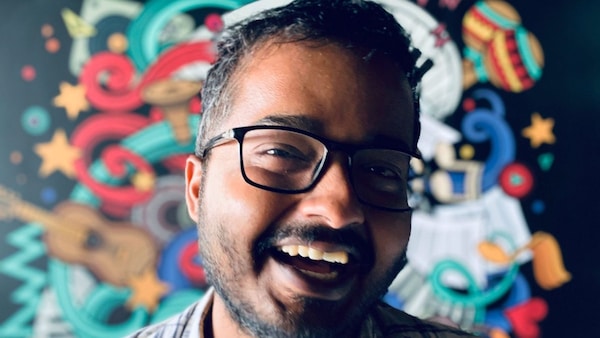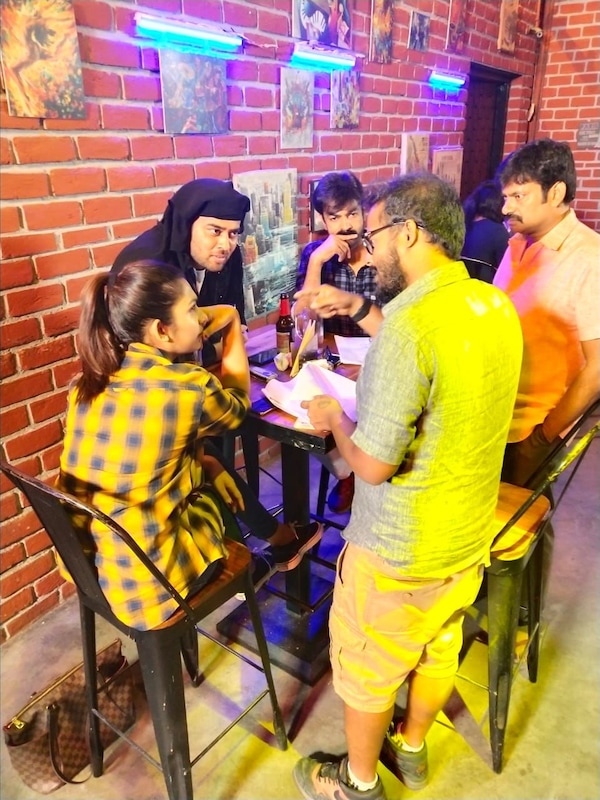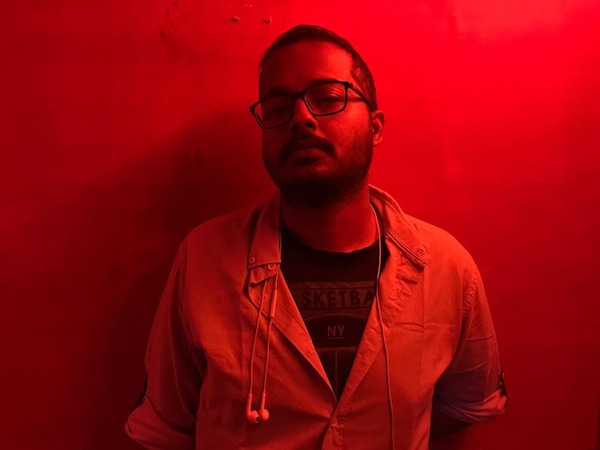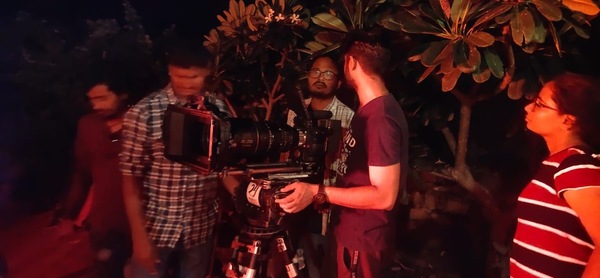Director Krishna Kanth Mamidala: Bad Trip may have been unusual for theatres, but it’s quite apt on OTT | Exclusive
The former associate of Nagesh Kukunoor, Bejoy Nambiar takes us through his tryst with filmmaking as he makes his directorial debut with Sony LIV’s Bad Trip

Last Updated: 05.36 PM, Mar 12, 2023
For a major part of his growing years, a career in films wasn’t on the mind of Krishna Kanth Mamidala. The filmmaker, who makes his OTT debut with SonyLIV’s dark comedy thriller Bad Trip this weekend, was a good student, earned decent grades and gave little reason for his parents to complain about.
Even when he got bit by the film bug during his engineering years, he chose his placement job first and gave himself enough time to think about making a career in the industry. However, once he made up his mind, he didn’t waste time - from joining a film school to networking with like-minded people, making short films, creating avenues for work and jumping on the OTT bandwagon.
Having associated with the likes of Nagesh Kukunoor, Bejoy Nambiar (and Akshay Akkineni) for over a decade, he talks about taking the directorial plunge, in an interaction with OTTplay.com
Engineering paving the way to a career in films
During my first and second years of engineering, I was studious and topped the college. However, from the third year, life took a different turn with short films and intercollege fests. I’d won prizes frequently and there was encouragement from many corners. I felt I was capable enough to take up filmmaking. I went to Bangalore to do an IT job and it was a phase where I wanted to explore my interests and give myself room to know if my career choice was working. I made some money in the meanwhile and left for Mumbai soon.
I got very fascinated by the early works of Danny Boyle - Shallow Grave, Trainspotting - and Darren Aronofsky - Requiem for a Dream, Pi. The stories were not mainstream, I liked them for their dynamism, music and the packaging won me over. From a writing perspective, I was in awe of Nolan’s The Prestige and watched most of his films later. All these works showed me an alternative beyond the industries we’re exposed to. After getting into the industry, I understood why we’re wired differently.
Film school diaries
For someone who had no connections within the industry, I saw film school as an avenue that filled me with self-belief. More than that, I saw it as an opportunity to be part of a community of like-minded people and storytellers. Beyond the classroom knowledge, the conversations with fellow film buffs help you throw light on various aspects of filmmaking. As long as you’re able to build that community, meet industry aspirants regularly in your city and read academic material online, it’s okay to start your career without a film school as well.

Finding my groove in Mumbai and being ‘busy’
Mumbai can be daunting for someone coming in from Telugu states but for someone who was so ambitious like me and is consumed by my passion, I liked the upbeat vibe of the city. I’d come there to achieve something that many called unstable, difficult and I wanted to prove myself. I made short films in the film school, one of them got selected at a popular festival and we got to be mentored by the likes of Vikramaditya Motwane, and Anurag Basu.
It offered great hands-on experience and exposure to interact with/be groomed by mainstream storytellers. One of my shorts caught the eye of Bejoy Nambiar; his second film David had just released and I was in awe of it. He noticed my other shorts later, liked them and took me under his wings six months after film school. I barely had to wait for work, he was producing Pizza in Hindi.

Confidence from hands-on experience on sets
Rising through the ranks across various departments gave me the confidence to make a film. With my broken Hindi, I was managing well, and interacting with the cast and crew and I knew I was making progress. In comparison with the short film experience, handling huge crews on film sets was similar and different at the same time - ultimately only the duration was longer and we were all telling a story. The canvas was different, but the motive was the same. I didn’t give myself too much time to think and surrounded myself with work, being part of 18/36 hour shoots as well.
One should be clear about what they’re getting out of every project. It’s commerce at the end of the day. As long as you’re okay with the balance (between storytelling and the commercial aspects) that the film is offering you and the process stays true to it, you should go ahead. I’m someone who grew up watching many commercial potboilers but I don’t know if I can make them.
Embracing OTT and writing Bad Trip
I started writing Bad Trip in 2018 when I was in Mumbai while working on another project. I had a bank of scripts earlier but I sensed where was the industry moving. The OTTs were just opening up and I wanted to be practical, pragmatic about choosing subjects that audiences would be willing to stream. Of course, it is every storyteller’s dream to make a film for the theatres but I went with the tide. In terms of storytelling, OTTs offer you a wider range.

Bad Trip may have been an unusual debut at theatres but is quite acceptable in the digital space. When you watch the show, you’ll realise I’d done a lot of things I wouldn’t have done with a theatrical release. It wasn’t handcuffed and in fact, liberated me. I sense the reactions to the show will be extreme - audiences will either love it or just not get it.
There are two interpretations to Bad Trip as a theme. While it’s a good one-liner story of a bunch of people in a cab trying to make easy money through a crime, there’s another side to the theme, when you go beyond the basic premise. It’s an experience, for sure. There’s a three-minute long shot in the fourth episode (that may not have made it into a feature film) that sums up the vibe of the show - your reaction to it will decide the aftertaste of the show.
Opting for a dark visual tone, shooting in the nights
This was a choice I was battling with, from day one after writing it. While writing the script, I was dealing with the characters more than thinking about shooting them day or night. It was my first shoot in Hyderabad and the grammar, and the nitty-gritties were different from Mumbai.
I was trying to shoot night sequences in the nighttime - the costs shot up, the producers asked me questions but I went in for the experience. The DOP knew me from my early days in Mumbai and he was the only person on set who at least knew me, where I was coming from and what I was going after. He was sportive, took it upon himself and we managed to film what we had in mind.

Re-discovering Hyderabad through the show
It was indeed a strange experience. I was visiting Hyderabad only for festivals and the city had changed drastically over the years. It has become more dynamic, and metropolitan and it was like exploring a new city. I was so driven by the energy of making the project that these aspects didn’t matter. I didn’t know half of the areas but I treated it like an adventure.
The similarities between him and Ravi Varma’s writer character
The autobiographical leanings weren’t there when I was writing it. I am more comfortable writing my scripts in English and even the Telugu writer I collaborated with, sensed Ravi Varma’s arc was quite similar to my life. My objective was to convey the frustration they had with their lives and involve viewers in the story. I wanted to create immediately accessible characters.
Casting the lead actors - Ravi Varma, Chaitanya Krishna, Giridhar, Archana and others
I happened to meet Ravi Varma before the show took off and I felt he was very funny, and spontaneous. He’s been pigeonholed into taking up a specific set of roles by the industry and I wanted to explore his natural timing in the show. With Bad Trip being a black comedy, it made more sense to tap into his timing. I and the Telugu writer worked around his strengths and he was naturally excited about the part.
This is how the other actors were roped in too and I cast them based on their off-screen personalities. They’re skilled actors but what matters to me is the person. We’d be shooting under gruelling conditions and it required actors to push themselves harder than in regular situations. They’re people who deserve more due than what they’d got till now. It naturally excited them because it presented them the scope to discover a new side to their repertoire.
What should be the deciding factor, when there’s a conflict between releasing a film directly on OTT and in theatres?
If I were to say my opinion, it’s not fair to judge where something is OTT-worthy or meant for the big screen at the scripting stage - it’s a trap. You can’t reverse-engineer box office success going by past records. Only when you watch a final product, you can decide if the product is good for home viewing or theatres. If every department of a film gave their ‘ten on ten’ in terms of their craft and their finesse shows in the product, I’d say it could go to theatres. For an OTT film, it’s okay to score a ‘six on ten’ and still please viewers. There may be many reasons to score only a ‘six’ - from budget constraints to the availability of the crew.
Subscribe to our newsletter for top content, delivered fast.

